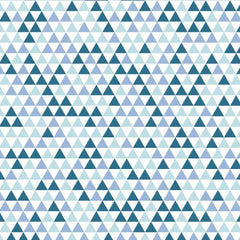
Unveiling the Elegance of Wagara: Exploring Traditional Japanese Patterns and Their Meaning
Share
Traditional Japanese patterns, known as "Wagara," have long been celebrated for their exquisite beauty and profound symbolism. These patterns have adorned various aspects of Japanese culture, including clothing, art, architecture, and everyday objects. In this blog post, we will embark on a journey to discover the enchanting world of Wagara, exploring different categories of patterns and unraveling their hidden meanings. Here are some examples:
I. Nature-Inspired Patterns:
1. Seigaiha (Blue Ocean Waves):
Seigaiha represents rolling ocean waves and signifies peacefulness and tranquility. The repeating arcs symbolize a harmonious flow, making it a popular choice for traditional clothing and home furnishings.
2. Kikko (Tortoiseshell):
Derived from the pattern on a tortoise's shell, Kikko signifies longevity, good luck, and prosperity. It is characterized by hexagonal shapes interlocking in a mesmerizing arrangement, often used in decorative arts and architecture.

3. Sakura (Cherry Blossoms):
Sakura, or cherry blossoms, are synonymous with Japan's ephemeral beauty and the transience of life. The delicate and elegant blossoms symbolize renewal, hope, and the fleeting nature of existence.
II. Symbolic Patterns:
1. Asanoha (Hemp Leaf):
Asanoha, resembling hemp leaves, is a popular pattern used for baby clothing. It signifies growth, good health, and protection against evil spirits. The geometric arrangement of the leaves represents the interconnection of life.
2. Uroko (Fish Scales):
Uroko, resembling overlapping fish scales, is believed to bring good fortune and ward off evil spirits. It is often used in traditional designs for textiles and pottery. The pattern's association with fish symbolizes abundance and prosperity.
3. Shippou (Seven Treasures):
Shippou represents a set of seven treasures: gold, silver, lapis lazuli, crystal, agate, coral, and pearl. This pattern signifies abundance, good fortune, and protection. It is commonly seen in Buddhist temples and traditional garments.
III. Animal and Nature Patterns:
1. Tsuru (Crane):
Tsuru, or crane, is a symbol of longevity, happiness, and good fortune in Japanese culture. The intricate patterns depicting cranes in flight often adorn kimonos and other traditional garments.
2. Koi (Carp):
Koi, or carp, represents perseverance, determination, and success. The vibrant and dynamic patterns of koi fish symbolize courage, overcoming obstacles, and achieving aspirations. Koi patterns are commonly found in art, textiles, and even tattoo designs..
3. Botan (Peony):
Botan, or peony, is regarded as the "King of Flowers" in Japan. Its lush, vibrant blossoms symbolize wealth, prosperity, and good fortune. The intricate patterns of peonies can be found in traditional fabrics and decorative arts.
Traditional Japanese patterns, or Wagara, beautifully capture the essence of Japanese aesthetics and culture. From nature-inspired motifs to symbolic representations, these patterns have adorned countless artifacts throughout history. Each pattern carries a profound meaning, intertwining elements of nature, spirituality, and symbolism. As we explore the rich tapestry of Wagara, we gain a deeper understanding of the Japanese people's reverence for beauty, tradition, and harmony with the natural world.
Check our Collection to discover where we have use them in our designs.

